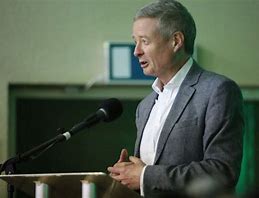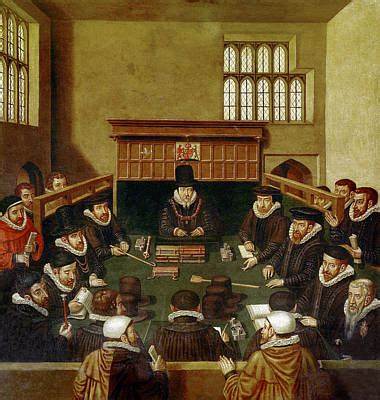

Friday Events
After being introduced by Fergus Cleary, Chairperson of the Mícheál Ó Cléirigh Summer School, Brian MacAmhlaigh formally opened the 2022 Summer School. Brian, who founded the Summer School and a native of Drogheda in Co Louth, but a Donegal by adoption as he had spent most of his adult life teaching in the county, told the audience, that he always had an admiration for the life and work of Br. Mícheál Ó Cléirigh particularly because he was a brilliant project manager who always sought a sponsor before he embarked on any of his scribal undertakings. For example, he asked Brian Ruaidh Maguire, Lord Enniskillen, to sponsor the copy of the Leabhair Gabhála or the Book of Invasions which told the earliest story of people coming to Ireland. Ultimately, he got Fearrall Ó Gadhra to sponsor the work of the Annals and once the money was in place, he organised his chroniclers and scribes from the hereditary learned Gaelic families whose editorial decisions would be respected.
Brian went on to say that he always felt that not enough was known about this native of south Donegal, born some two miles from Rossnowlagh at Kilbarron and he wanted Mícheál’s memory to be honoured and what better way was that there would be a history Summer School held each year to honour his work and memory. Thus, the Summer School came into existence in May 2014.
Primary Schools’ Art Prize-giving
The 2022 Primary Schools art competition was once again presented with a large entry of art work from many young artists from seven schools in the locality. This year after the various lockdowns and restrictions in schools with teachers and pupils isolating to prevent further infections, led us to think that the entry would be small but the opposite was true as the entry was on a par with other pre-pandemic years. The competition is one of the highlights of the summer school and it is great to see so much talent in the locality.


Saturday Events
Bloodshed & Retribution Doirteadh Fola agus Díoltas’
Aims & Objectives
by Professor John Mc Cafferty
Professor John McCafferty set out the objectives of the weekend to examine the changes in the laws in Ireland at the end of the Gaelic system of Brehon laws (based on the notion of ‘keeping the peace between neighbours’ and so without harsh sentences such as hanging or flogging, but a fine had to be paid by the guilty person, or by his clan, to compensate the injured individual) to the English system (within the English common law system, judges have more authority to interpret law but are bound by precedent) and the various implications surrounding this fundamental systematic transformation of life in late medieval Ireland.
To Barbados or Bofin: the fate of Catholic priests in Ireland in the aftermath of the Cromwellian conquest’?
Dr.Áine Hensey, historian and RTÉ Raidió na Gaeltachta presenter will explain the circumstances surrounding Cromwell’s army’s treatment of prisoners on the isle of Inishbofin in the 1650s. The Island was used as a holding area for rebel prisoners and captured priests and friars were held before being sent to Barbados and other islands in the Caribbean.
Few people realise that the very beautiful island of Inishbofin, off the west coast of Galway was once used to incarcerate prisoners before being dispatched to the sugar plantations of the West Indies.

As part of the Cromwellian land settlement four counties were reserved for the transplanted Gaelic and Anglo-Norman Irish landowners. The counties were Mayo, Galway, Clare and Roscommon. The lands given in compensation for forfeited estates in the rest of Ireland excluded lands close to major rivers and excluded the coastal Islands. As a result islands such as Inishbofin and the Aran Islands were garrisoned by Cromwellian soldiers in case of invasion from the exiled Stuarts, aided by the French crown.

This land of ire: Slaughter and Surrender during the Nine Years War, 1593-1603′
During the period from 1593 to 1603,the so called ‘Nine Years War’ destruction and mayhem came to every part of Ireland with large bodies of troops manoeuvring to gain advantage over the other, the Irish forces in the ascendant after the Battle of the Yellow Ford in August 1598 but the Irish forces led by Hugh O’Neill and Aodh Ruaidh O’Donnell were eventually defeated at the Battle of Kinsale in December 1601. The war continued until the Treaty of Mellifont in March 1603. Dr James O’Neill told the fascinating story of these events and of the treatment of prisoners on both sides. One of the interesting aspects of James O’Neill’s research was that both contemporary Irish and English accounts of the war underplayed the sophistication of both Hugh O’Neill’s forces in central Ulster and those of Aodh Ruaidh O’Donnell’s forces in west Ulster and North Connacht. The English explained their defeats in the field by the excuse that their opponents used unfair and ungentlemanly tactics. Whilst the Irish accounts principally that of Lughaidh O’Clery and written some years afterwards, extoll the simplicity of the Gaelic forces against the overwhelming might and modern armaments of the English army. Nothing could be further from the truth as his research has revealed that both armies employed modern 17th Century battlefield tactics.
Bishop Cornelius O’Devany: Franciscan martyrdom and suffering in 17th century Ireland’
The execution of Bishop Conchobhair Ó Duibheannaigh (Conor O’Devenny) took place in Dublin on the first of February 1612. His life was quite remarkable and he had avoided the scaffold some twenty- four years before in 1588.
Professor John McCafferty, Director of the Mícheál Ó Cléirigh Institute UCD related the intrigue surrounding the story of Conor O’Devenny and that of other Franciscans who fell foul of the government in this period of Irish history. He was born in Malin at the tip of the Inishowen peninsular in 1530 and educated at the Franciscan Convent in Donegal, later becoming a Franciscan.In the tumultuous period of the break by Henry VIII from the Catholic Church and the setting up of the Anglian Church in the latter part of the 16th Century the most of Ireland remained faithful to Rome although it was common for both the Catholic Church and Anglican Church to make similar appointments to vacant sees. Conor O’Devenny was appointed Bishop of Down & Connor by Pope Gregory XIII on 27 April 1582, and consecrated by Cardinal Nicolas de Pellevé on 2 February 1583 in the German Chapel in Rome.
He returned to Ireland and was arrested in 1588 and imprisoned in Dublin Castle. Failing to get a jury to convict him Lord Deputy Fitzwilliam petitioned Lor Burghley to find a charge that would convict him but did not get the permission required. He was released in 1590 and from then until the Flight of the Earls in 1607, he was under the protection of Hugh O’Neill, Earl of Tyrone.
Perhaps it was this association and the extreme hatred that Lord Deputy Arthur Chichester had for the Earl of Tyrone that led to his arrest in 1612 and subsequent trial and conviction of treason in late January of that year that ultimately led to his execution by being hung, drawn and quartered.
Punishment, pain, and plantation – crime and punishment in an Irish colonial setting
The keynote talk at the 2022 Mícheál Ó Cléirigh Summer School was ‘Punishment, pain and plantation- crime and punishment in an Irish colonial setting’ which looked at the change from the Brehon system of law to the English system of common law and how that diverged from the practice of common law in England, Scotland and Wales.
1603 was a watershed year for Ireland. It had a change of dynasty – not that one would notice much, as monarchs rarely visited Ireland. More noticeable is that it marked the end of an independent Gaelic political entity in Ireland and in the aftermath of this, the English common law system was extended over the entire island for the first time. Whilst much of this system dealt with land law and inheritance, the criminal justice system was also extended to all corners of the kingdom, and some of its inhabitants came into contact with a system that they had not known before. It may be an irony that whilst the law was a central plank in the English ‘civilizing mission’ in Ireland (along with religion, language, etc), it came at a time when the island was consumed in the six decades either side of 1603 watershed by the most destructive violence, much of it perpetrated by the state and its actors.The talk by Coleman Dennehy considered many of the broader issues of the criminal justice system in the period – how it worked, how the law was adapted to suit Ireland, what it sought to achieve. It will ask who the system defended and who did it prosecute. It will consider what punishments were available to the state, and how often and with what severity they were used. Finally, it will attempt to come to some conclusions about what kind of role it played in the overall process of colonization in Ireland, whether it was a successful contribution, and to what extent did it help to control or improve Ireland.
Sunday Events:
Bus trip to places of historical interest
Kilbarron Church
Kilbarron Church has great significance to the story of Mícheál Ó Cléirigh as it is the likely place where he was baptised in or around 1590. He was baptised Tadgh and was the youngest son of the family of Honora and Donnchada Uí Cléirigh. His older brothers were Uillim, Maoilmhuire and Conaire.
In May 2022 the Heritage Council of Ireland made a grant offer to the Kilbarron Castle & Church Conservation Group to carry out some conservation work on the east gable of the church. This work was completed in October 2022.

Brownhall
The tour group travelled onto Brownhall House near Ballintra, home to the Hamilton family. We were given special permission to visit the grounds and were guided by John McMurray. The woodland was in full early summer bloom with bluebells growing in the shaded trees. We saw a small twin arched bridge sited over the Blackwater river or sometimes better known as the Ballintra river. The bridge was originally paced to give guests a view of the house but in the centuries since its construction, the tree cover now obscures the house.
We continued to another part of the woods to see the underground caves known as the “Pullins” This natural phenomenon is caused by the erosion of the limestone rock over millions of years. Due to the slippery undergrowth we did not venture too close to the edge,




Abbey Mill Tea shop and Cafe
After completing the tour of the Brownhall woodland we travelled back passed the ancient monastic site of Rathcunga or Racoo and travelled along passing over Conor’s Bridge at Foyagh reputedly built by Conor O’Clery son of Flann O’Clery, whose tombstone is the oldest recorded found in the Abbey Assaroe cemetery. We arrived to a lovely prepared lunch at the Abbey Mill tea shop and Cafe which is run solely by volunteers. This is part of the site occupied by the Assaroe Cistercian monastic site founded in 1184 by Fláithri Uí Maoildoraidh,(Muldorey) King of Tír Connaill. He invited monks from the Cistercian convent in Boyle (Co Roscommon) to come and set up an abbey at Áth Seanaidh. It is believed that the original foundation was on Inish Saimer at the mouth of the Erne estuary but later moved to the north shore of the Erne where the ruins are situated.. The new site close to the Uinshinn (Abbey) river gave the monks more room to extend the abbey and by the 14th Century it was the site of a small











